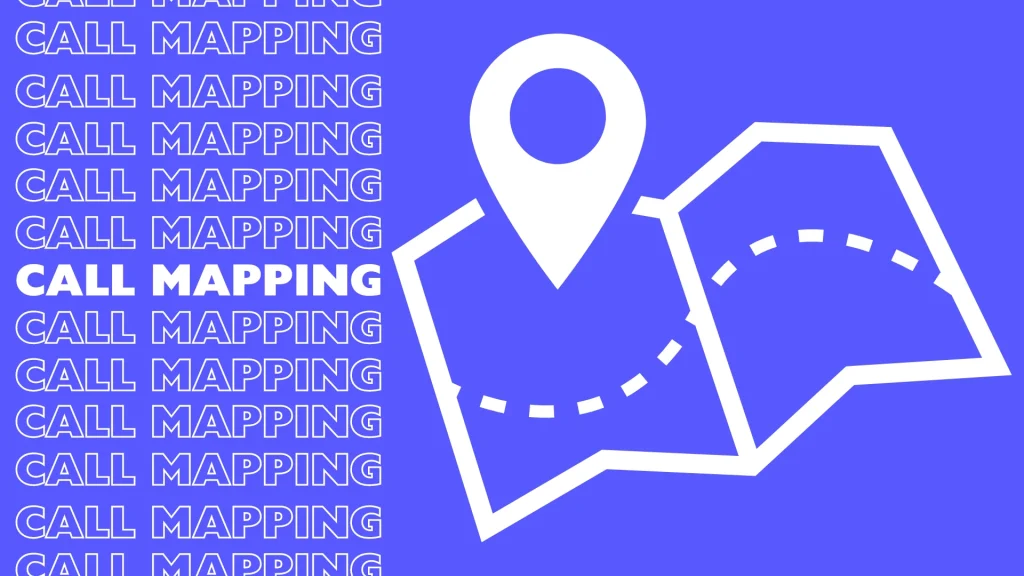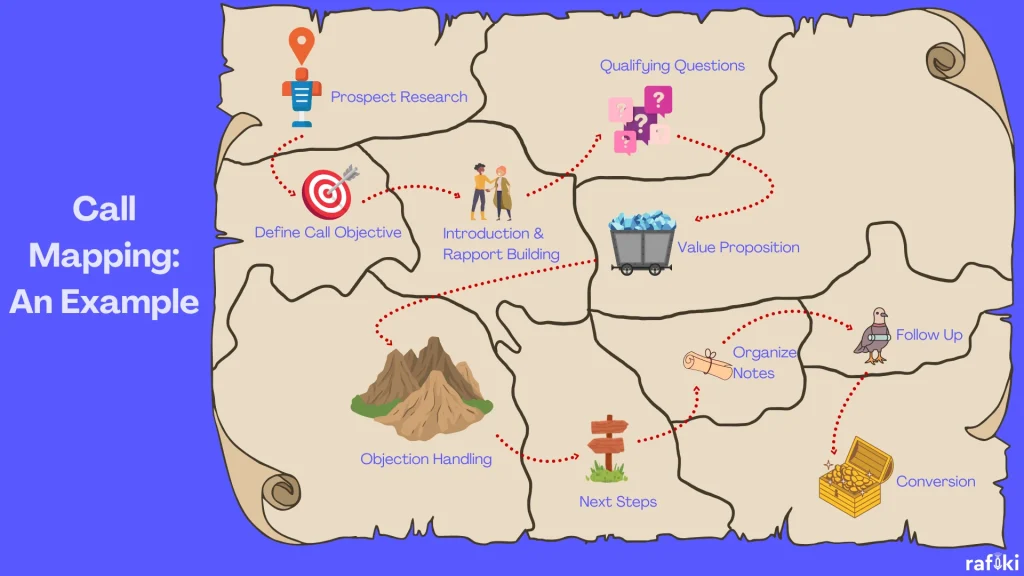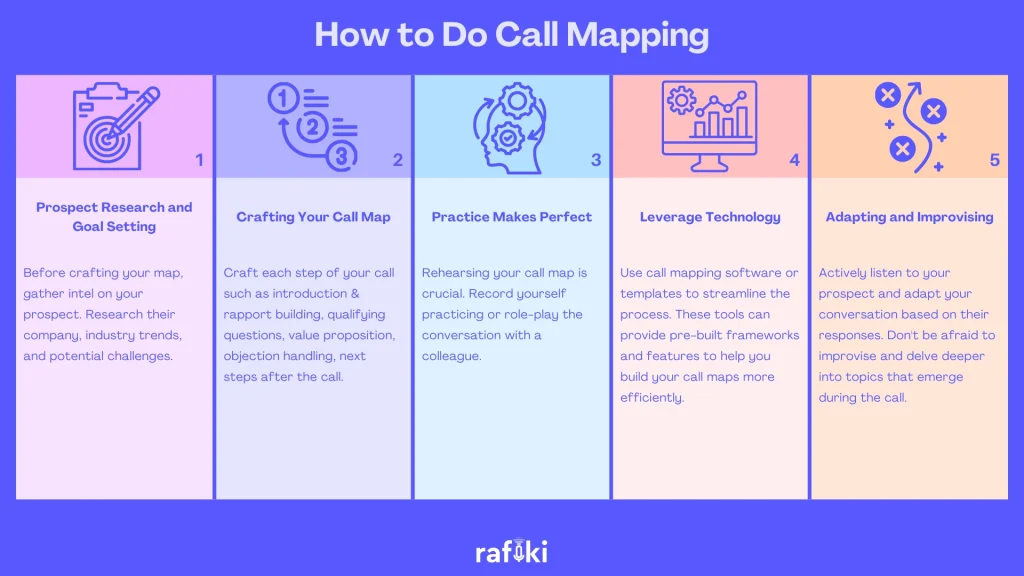Why Rafiki
Pricing


Pricing
Solutions

RevOps Leaders
Synchronize revenue generating functions

SDR Leaders
Get your team aligned and Coach your Reps 3x faster at scale

Sales Leaders
Unlock pipeline truth, drive confident forecasts

Imagine a sales call where you confidently guide the conversation, anticipate objections, and close the deal with ease. Call mapping makes this possible. It's like a roadmap for your sales call, ensuring you hit all the key points and navigate towards your desired outcome. Whether you're a seasoned salesperson or just starting out, call mapping can be the secret weapon that boosts your conversion rates and fuels your sales success.
Call mapping is the strategic planning of your entire sales conversation. Think of it like a detailed itinerary for a journey. Just as a trip requires planning destinations, transportation, and potential detours, your call map outlines the flow of your conversation. It includes key topics you want to cover, questions to ask your prospect, and even potential responses to address their concerns. This structured approach ensures you don't miss crucial information or get sidetracked during the call, keeping the conversation focused and moving towards your defined objective.
But don’t confuse this with “mapping call” - that refers to calls that help a sales person or a customer success person map out a prospect’s organization. Here’s a fun illustration what call mapping may look like for a typical discovery call:

Call mapping and sales scripts serve different purposes in a salesperson's toolkit. While both aim to guide the sales conversation, they differ in flexibility and focus.
A call map is like a roadmap for your call, outlining key topics, questions, and potential responses. It's flexible, allowing for adaptation based on the prospect's needs. Think of it as a strategic plan with room for improvisation. In contrast, a sales script is a word-for-word outline of what to say. It offers consistency but can sound robotic and hinder genuine connection. Scripts focus on features, while call maps emphasize addressing the prospect's specific challenges and benefits.
To put it simply, call mapping empowers thoughtful conversation, while sales scripts prioritize a controlled presentation.
Dodge these pitfalls to ensure your call mapping strategy steers you towards success:
Before we talk about how to do call mapping, let’s quickly remind ourselves why:

Now that we have the full context, let’s get started on how to actually go about doing call mapping:

Call mapping doesn't have to be complicated. Here's a simple 5-step process to map out any sales conversation:
Before crafting your map, gather intel on your prospect. Research their company, industry trends, and potential challenges. This allows you to tailor your conversation and identify talking points that resonate with their specific needs. Once you understand the prospect's landscape, define a clear and measurable objective for your call. Do you want to schedule a demo, gather specific information, or qualify them as a potential lead?
Think of your call map as a blueprint for the conversation. Here's a common structure to follow:
For each section, include talking points, relevant questions, and potential responses you might encounter.
Rehearsing your call map is crucial. Record yourself practicing or role-play the conversation with a colleague. This helps you refine your delivery, identify areas for improvement, and build confidence in your responses.
Consider using call mapping software or templates to streamline the process. These tools can provide pre-built frameworks and features to help you build your call maps more efficiently. Using Rafiki can help in understanding how your calls usually go, map that out and identify where exactly detours are happening and require course correction.
Keep in mind, your call map is a guide, not a rigid script. Actively listen to your prospect and adapt your conversation based on their responses. Don't be afraid to improvise and delve deeper into topics that emerge during the call.
Call mapping empowers you to navigate sales conversations with confidence and purpose. By implementing these steps, you'll be equipped to tailor your approach, address prospect needs effectively, and ultimately close more deals.
Ready to gain a deeper understanding of sales conversations and craft winning call maps? Sign up for your free 14-day trial of Rafiki and discover how our powerful conversation intelligence platform can take your sales game to the next level!
Master Sales Conversations